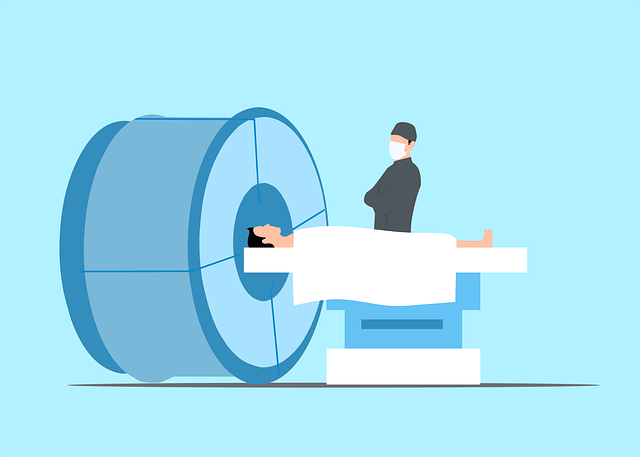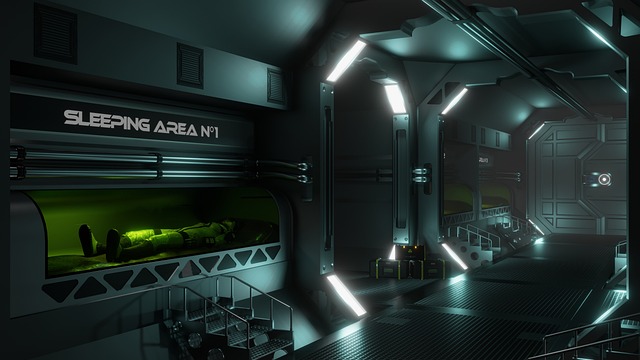10 Essential Skills Every Radiologic Technologist Must Have in 2025 for a Successful Career
Introduction: The Rising Importance of Radiologic Technologist
When most people think of healthcare, they immediately envision doctors, nurses, and surgeons. But a vital group of healthcare professionals working tirelessly behind the scenes to aid in diagnosis and treatment: radiologic technologist. These professionals are often referred to as X-ray technicians or medical imaging technologists. They operate the medical imaging equipment. This equipment helps doctors diagnose injuries and illnesses.
If you’ve ever assumed that a radiologic technologist only needs basic technical skills, think again. The role requires a unique combination of technical expertise, patient care, and adaptability to new technologies. The growing demand for skilled radiologic technologists has made it a promising career in 2025 and beyond. This blog will walk you through the 10 essential skills you need to master to succeed in radiologic technology.
What is a Radiologic Technologist?
A radiologic technologist is a healthcare expert who uses advanced imaging equipment like X-rays, MRIs, and CT scans to capture detailed images of the body. These images play a crucial role in diagnosing and treating medical conditions. Radiologic technologists combine technical skills with patient care. They ensure accurate results and keep patients safe and comfortable during procedures.
Dispelling Common Myths About Radiologic Technologists
Many people mistakenly confuse radiologic technologists with other healthcare professionals like X-ray technicians or MRI technologists, assuming they’re all the same. But here’s the truth: while they all work with medical imaging equipment, the role of a radiologic technologist is much more diverse.
A radiologic technologist is trained to perform various diagnostic imaging procedures, including X-rays, CT scans, and MRIs. They are responsible for correctly positioning patients, operating the imaging equipment, and ensuring the images meet the necessary diagnostic standards. But it’s not just about being technically proficient; these professionals also need to have excellent patient care skills and an understanding of radiation safety.
Key Differences Between Radiologic Technologists and Other Imaging Professionals
While an X-ray technician specializes in operating X-ray machines, and an MRI technologist focuses on MRI scans, a radiologic technologist is trained in multiple imaging modalities. This versatility allows them to work in various healthcare settings, from hospitals to diagnostic clinics, and even mobile imaging units.
The role of a radiologic technologist goes beyond simply taking images. They work closely with radiologists to interpret the results. This collaboration ensures that the imaging process is seamless. It also guarantees that the results are accurate. Medical imaging plays a critical role in diagnosing a wide range of conditions, from broken bones to complex diseases like cancer. As such, the expertise of radiologic technologists is indispensable to the healthcare system.
Certification and Training for Radiologic Technologists
To become a licensed radiologic technologist, professionals must undergo specific training, which often includes obtaining a degree in radiologic technology, gaining hands-on clinical experience, and passing certification exams. The exact requirements can vary depending on the country or state, but in the U.S., certification from organizations like the American Registry of Radiologic Technologists (ARRT) is often required. This certification ensures that radiologic technologists have the skills. They also possess the knowledge needed to work safely and efficiently with imaging equipment.
The Growing Demand for Radiologic Technologists
The demand for radiologic technologists is rapidly increasing as advancements in medical imaging technology continue to revolutionize healthcare. With the rise of chronic illnesses, an aging population, and the need for early, accurate diagnoses, skilled professionals in radiologic technology are more essential than ever. This growing demand offers exciting career opportunities and long-term job security for those entering the field.
The Healthcare Boom and Rising Need for Radiologic Technologists
You might think that the radiologic technologist job market is already saturated, but that couldn’t be further from the truth. The demand for skilled radiologic technologists is only expected to increase in the coming years, and here’s why: The healthcare industry is experiencing rapid growth, especially due to the aging population. Older adults typically require more diagnostic imaging to manage their health. This situation means there is a greater need for professionals to operate the equipment and interpret the results.
According to the U.S. Bureau of Labor Statistics, the employment of radiologic technologists is projected to grow 9% from 2021 to 2031—faster than the average for all occupations. The demand is expected to rise because medical imaging technology is advancing. These new advancements will make procedures more widely available. As medical imaging becomes an even more integral part of diagnosis and treatment, healthcare facilities will continue to seek radiologic technologists to fill the growing number of positions.
The Role of Technological Advancements in Creating Job Opportunities
With the continuous evolution of medical imaging technologies, the role of a radiologic technologist is becoming more specialized. New imaging techniques like 3D mammography, functional MRI, and robotic-assisted imaging are becoming increasingly common. Radiologic technologists need to stay ahead of these trends. As such, professionals who specialize in advanced imaging modalities like CT scans or MRI are in high demand.
However, it’s not just larger hospitals that need radiologic technologists. Diagnostic imaging technology is expanding into smaller healthcare settings. These settings include urgent care centers, outpatient clinics, and even mobile imaging services. This expansion is further increasing the demand for qualified professionals. Whether you’re working in a bustling city hospital or a small rural clinic, the need for radiologic technologists is widespread.
Radiologic Technologist Salary Expectations and Career Growth
As demand increases, so does the potential for competitive pay. According to industry reports, the radiologic technologist’s salary varies depending on location, level of experience, and area of specialization. MRI technologists and those trained in CT scans tend to earn higher salaries compared to general radiologic technicians due to the specialized nature of their work.
Moreover, as you gain more experience and specialize in certain areas of imaging, your salary potential will continue to grow. In addition to higher pay, experienced radiologic technologists can also pursue career advancement opportunities, such as becoming radiology supervisors or imaging directors. This continued professional growth means more career stability and long-term job security for those in the field.
Job Security in Radiology: Myths vs. Reality
A common misconception is that with all the technological advancements, the role of radiologic technologists might become obsolete. Medical imaging technology is evolving. These advancements are enhancing the role of radiologic technologists. They are not replacing it. Automation and artificial intelligence (AI) may assist with certain tasks, but human expertise in patient care, radiation safety, and technical proficiency remains indispensable.
As a radiologic technologist, you are not just a technician but an integral part of the healthcare team. Your ability to interact with patients, operate complex machinery, and ensure that the images produced meet diagnostic standards is irreplaceable. Instead of fearing obsolescence, embrace the opportunities presented by new technologies. Continue developing your skills to stay ahead of the curve.
Essential Skill #1 – Technical Proficiency with Imaging Equipment
Being skilled with advanced imaging equipment like X-rays, MRIs, and CT scanners is crucial for a radiologic technologist. Technical proficiency ensures accurate imaging, proper equipment calibration, and adherence to safety protocols. Mastering these tools allows technologists to capture clear, diagnostic images while minimizing risks, making it a cornerstone of success in this profession.
Mastering the Equipment: The Backbone of Radiologic Technology
When it comes to being a successful radiologic technologist, one of the most important skills is technical proficiency. The ability to operate complex imaging equipment efficiently is at the core of the profession. Whether you’re handling a traditional X-ray machine, an advanced CT scanner, or a high-tech MRI machine, being able to operate these devices with precision is non-negotiable. The accuracy of your images directly impacts the diagnosis, and that responsibility is huge.
But technical expertise isn’t just about knowing how to press buttons or adjust settings. You need a deep understanding of how each piece of equipment works and how to troubleshoot it when something goes wrong. With new medical imaging technologies constantly entering the field, the radiologic technologist must continuously update their skills to stay on top of the latest devices.
Hands-On Experience and Training for Radiologic Technologists
To gain this level of technical proficiency, radiologic technologists undergo rigorous training that combines theoretical knowledge with hands-on practice. You might be in a classroom or a clinical setting. In both, you will learn how to position patients for the most accurate images. You will adjust the equipment for different body types. You will also ensure radiation safety throughout the procedure.
As imaging technologies evolve, some radiologic technologists specialize in certain areas like cardiac imaging or neuroimaging. Specialization in advanced imaging modalities like 3D mammography or positron emission tomography (PET) can set you apart from the competition and significantly boost your career prospects.
Essential Skill #2 – Understanding Anatomy and Positioning
A deep knowledge of human anatomy and patient positioning is vital for radiologic technologists. This skill ensures precise imaging by targeting the correct areas of the body and minimizing the need for retakes. Proper positioning not only enhances image clarity but also reduces patient discomfort and radiation exposure, contributing to accurate diagnoses and better patient care.
The Critical Role of Anatomy in Medical Imaging
It’s no surprise that one of the key skills every radiologic technologist must develop is a strong understanding of human anatomy. Unlike other medical roles, radiologic technologists must have a detailed knowledge of the human body to capture the best possible images. Understanding human anatomy helps you position patients correctly to ensure that you get accurate, high-quality diagnostic images.
You need to know how bones, muscles, organs, and tissues appear in different imaging modalities. For example, in X-ray imaging, bones will appear white, while soft tissues will appear darker. Knowing this, you can adjust the positioning to ensure the images provide all the information needed for a diagnosis. This expertise is also vital for understanding and interpreting radiology reports.
Perfecting Patient Positioning for Optimal Imaging Results
Patient positioning is key when it comes to accurate imaging. A slight misalignment can lead to inaccurate results, necessitating retakes and wasting valuable time and resources. Radiologic technologists must know how to position patients based on the specific type of imaging being conducted and the area of the body being examined. Whether it’s a chest X-ray or an abdominal CT scan, you’ll need to understand the proper angles and views to provide the clearest possible images.
As the imaging industry advances, more advanced positioning techniques will emerge, so it’s critical to stay educated on the latest techniques and updates in patient positioning. With technology improving, many new positioning tools and aids are becoming available. This development makes this skill even more critical for achieving accuracy. It also helps in minimizing patient discomfort.
Essential Skill #3 – Radiation Safety and Protection
Radiation safety is a critical skill for radiologic technologists to protect both patients and themselves. By following strict protocols, using shielding tools, and minimizing radiation exposure, technologists ensure procedures are safe while still delivering high-quality diagnostic images. This expertise is essential for maintaining trust and safety in medical imaging.
Protecting Patients and Yourself: The Importance of Radiation Safety
One of the most vital skills every radiologic technologist must have is a strong commitment to radiation safety. After all, as much as radiologic technologists work with machines that emit radiation, it’s important to remember that radiation exposure can be harmful if not managed correctly. As a professional, you must ensure patients receive the lowest possible dose of radiation. It’s your responsibility to still obtain the necessary diagnostic information.
In addition to protecting patients, radiologic technologists must also be vigilant about their radiation exposure. They must wear appropriate personal protective equipment (PPE). Using lead shields when necessary is crucial. They should follow strict protocols for radiation exposure. These measures are essential for ensuring a safe working environment.
Radiation Protection Guidelines and Best Practices
There are well-established guidelines for radiation protection in the imaging field, and radiologic technologists must be well-versed in them. Adhering to the ALARA (As Low As Reasonably Achievable) principle ensures that radiation exposure is minimized without compromising image quality. Radiologic technologists take steps like properly positioning patients. They use shielding devices. They also choose the most appropriate imaging technique for each case.
Proper training in radiation safety is a must for all radiologic technologists, and it’s not a one-time event. Radiation safety protocols evolve, so you’ll need to engage in regular training and continuing education to stay updated.
Essential Skill #4 – Patient Care and Communication
Strong patient care and communication skills are essential for radiologic technologists to create a calm and supportive environment. By explaining procedures clearly and addressing concerns, technologists help reduce patient anxiety and ensure cooperation, leading to accurate imaging and a positive healthcare experience.
Why Patient Care Matters for Radiologic Technologists
Many people assume that radiologic technologists are purely technical experts who focus only on taking images. While technical proficiency is essential, providing compassionate patient care is just as crucial. As a radiologic technologist, you’ll frequently interact with patients, some of whom may be anxious, in pain, or uncertain about the imaging process. Your ability to communicate effectively and offer reassurance can significantly impact their experience.
Strong patient communication helps establish trust and ensures that patients are comfortable throughout the imaging process. Explaining the procedure, answering any questions, and ensuring patients feel safe and informed reduces anxiety. This process can also lead to better imaging results.
Building Rapport and Comfort with Patients
Effective communication starts with empathy. Radiologic technologists must be sensitive to the needs of each patient. Pediatric patients and individuals with diverse needs may require extra support and understanding during their imaging sessions. Creating a welcoming environment, using a calm tone, and explaining procedures in simple, clear language can make all the difference.
Good patient care isn’t just about technical know-how; it’s about making patients feel heard, respected, and valued. Build rapport with patients. Make the imaging process less intimidating. Doing so not only improves the patient’s experience but also ensures a smoother and more successful procedure.
The Role of Compassion in Radiologic Technology
One aspect of patient care that is often overlooked is the emotional side of the job. The world of medical imaging can be overwhelming for many patients, particularly those undergoing diagnostic tests for serious health concerns. As a radiologic technologist, your empathy and understanding can help patients feel more at ease during what could be a stressful time.
You might be the first to alert the medical team about a patient’s condition. This alert is based on the images you’ve captured. Attentiveness and being detail-oriented when taking images ensure diagnostic accuracy. They also contribute to the overall care of the patient. Compassionate communication and care go hand-in-hand, making you not just a technician but an integral part of the healthcare team.
Essential Skill #5 – Attention to Detail
Attention to detail is crucial for radiologic technologists to capture accurate images and ensure proper diagnoses. From positioning patients to calibrating equipment, even the smallest oversight can impact results. Precision and focus help maintain high standards in imaging and patient care.
Why Precision Matters: The Role of Attention to Detail in Radiologic Technology
Radiologic technology is a field where precision and accuracy are paramount. A small error, like mispositioning a patient, can lead to inaccurate images. Incorrectly calibrating a machine may also cause problems. These issues can require retakes or, worse, result in missed diagnoses. This is where attention to detail becomes a game-changer for a radiologic technologist.
Every step of the process, from setting up the equipment to positioning the patient and adjusting settings, demands careful attention. A radiologic technologist must ensure that the images they capture are of the highest quality and provide the clearest possible view for the physician to make a diagnosis.
Training Your Eyes for Accuracy in Imaging
It takes time and experience to develop a sharp eye for detail, but it’s one of the most valuable traits a radiologic technologist can have. As you gain more experience, you’ll be able to spot potential issues before they arise. This could mean adjusting the angle of an X-ray to avoid a shadow. It may also involve ensuring the machine is calibrated correctly. Another aspect is noticing slight discrepancies in a patient’s positioning that could affect the final image.
The key to developing attention to detail is practice and a commitment to quality. Stay mindful of every step of the imaging process. Be meticulous in your work. This reduces the risk of mistakes and ensures that each image you produce serves its intended purpose.
Attention to Detail and Its Impact on Patient Outcomes
While you may think of attention to detail as a technical skill, it also plays a role in patient care. Clearer and more accurate images make it easier for the radiologist to diagnose on time. Accurate images also lead to accurate diagnoses. This can lead to earlier intervention, which is critical in conditions like cancer or cardiovascular diseases. Therefore, your meticulous attention to every detail could have a direct impact on a patient’s prognosis.
Additionally, ensuring that you follow radiation safety protocols to the letter and pay attention to the patient’s comfort during the imaging process contributes to better overall care and results. As you hone your skills, your ability to detect small errors or inconsistencies will improve, leading to better outcomes for both you and your patients.
Essential Skill #6 – Critical Thinking and Problem Solving
Critical thinking and problem-solving are vital for radiologic technologists to handle unexpected challenges, such as equipment malfunctions or complex patient needs. By quickly analyzing situations and adapting, technologists ensure accurate imaging, efficient workflows, and optimal patient care under any circumstances.
Critical Thinking: A Radiologic Technologist’s Secret Weapon
As much as radiologic technologists rely on medical imaging technology to do their jobs, there will always be situations that require human judgment. Whether it’s a technical glitch, an unusual patient condition, or a complex imaging procedure, critical thinking is an invaluable skill that every radiologic technologist must develop.
Being able to quickly identify issues, troubleshoot problems, and adapt to unexpected situations is essential in this field. For instance, you might have to adjust the machine settings in the middle of an exam because of technical issues or reposition a patient to get a clearer image. Problem-solving skills can make all the difference in these scenarios.
Problem-Solving in Complex Imaging Situations
Every imaging exam is different, and each patient’s needs and conditions vary. For example, patients with pacemakers may require special care when undergoing certain imaging procedures, or you may encounter a patient with difficulty holding still for an MRI scan due to pain or anxiety. In these instances, critical thinking and problem-solving come into play. A radiologic technologist must assess the situation, figure out the best approach, and find a solution to ensure both patient safety and image quality.
As imaging technology becomes more sophisticated, the types of problems you’ll encounter will evolve. Being able to think on your feet, assess the situation quickly, and find the right solution is a skill that will make you an asset in any medical setting.
Adapting to New Technologies and Procedures
With technological advancements in the radiology field, you’ll need to continuously update your skills and adapt to new procedures. Whether it’s a new imaging modality like digital mammography or a more efficient workflow system, being able to learn quickly and apply new methods on the job is crucial. Radiologic technologists who excel in this area are often more successful in managing the ever-changing landscape of healthcare technology.
Essential Skill #7 – Time Management and Efficiency
Effective time management is essential for radiologic technologists working in fast-paced healthcare settings. By prioritizing tasks, streamlining workflows, and maintaining efficiency, technologists ensure timely imaging, reduce patient wait times, and contribute to a smooth healthcare experience.
Why Time Management is Crucial for Radiologic Technologists
In the fast-paced world of healthcare, radiologic technologists often work under tight schedules and high pressure. Whether you’re performing X-rays, CT scans, or MRIs, time is of the essence. A single mistake or delay can impact a patient’s diagnosis and potentially delay other procedures. Effective time management skills are vital to ensuring that patients receive timely care while maintaining the accuracy and quality of images.
It’s not just about moving quickly; it’s about balancing speed with precision. Good time management helps you prioritize tasks, ensuring you allocate enough time for each imaging procedure while still being efficient. This is especially important when you’re dealing with multiple patients in a single shift or working in high-demand environments like emergency rooms or urgent care clinics.
Techniques for Effective Time Management
One of the most effective strategies for time management is setting clear priorities. For example, if you’re responsible for multiple imaging exams in a day, it’s essential to schedule each patient based on urgency. Patients with higher medical risks or those requiring immediate diagnosis should be prioritized.
Another helpful approach is using a digital workflow management system that streamlines your scheduling, patient tracking, and image reporting. These tools help you stay organized and keep track of your tasks efficiently. The key to successful time management is not just being fast, but being methodical and organized to keep everything running smoothly.
Essential Skill #8 – Physical Stamina and Dexterity
Physical stamina and dexterity are key for radiologic technologists, as the job involves standing for long periods, lifting patients, and handling equipment. Maintaining strength, flexibility, and coordination ensures that technologists can perform tasks effectively and minimize the risk of injury during procedures.
The Physical Demands of a Radiologic Technologist’s Job
While many people think of radiologic technologists as primarily desk-based roles, the job demands a significant amount of physical stamina. Radiologic technologists frequently need to stand for long periods, lift and adjust patients, and maneuver heavy equipment. Whether you’re positioning a patient for an MRI scan or moving a CT scanner into place, the physical demands of the job are high.
Additionally, manual dexterity is crucial when handling imaging equipment and adjusting settings for precise imaging. Whether you’re adjusting the controls on an X-ray machine or managing a complex digital imaging system, the ability to handle equipment with precision is essential. This means your hand-eye coordination must be sharp and your movements fluid.
Maintaining Physical Fitness and Ergonomics
Given the physical nature of the job, it’s important to maintain overall physical health and well-being. Practicing proper ergonomics when positioning patients or handling equipment is key to preventing strain or injury. For example, bend your knees when lifting equipment. Do not bend your back. This helps reduce physical stress on your body when assisting patients.
Regular physical exercise and stretching routines are also essential for maintaining physical stamina and ensuring you’re able to perform your tasks without discomfort. Many radiologic technologists incorporate exercises to improve flexibility and strength, focusing on areas like the back, legs, and shoulders that take the most strain.
Essential Skill #9 – Knowledge of Medical Terminology
A solid understanding of medical terminology is essential for radiologic technologists to communicate effectively with doctors, nurses, and other healthcare professionals. Knowing terms related to anatomy, procedures, and conditions ensures accurate documentation. It also enhances the efficiency of patient care and imaging interpretation.
The Importance of Medical Terminology for Radiologic Technologists
In the world of radiologic technology, understanding medical terminology is essential. You’ll frequently work with healthcare professionals. This group includes radiologists, doctors, and nurses. They use specific medical terms to describe anatomy, conditions, and procedures. Being familiar with medical jargon helps ensure clear communication and reduces the risk of errors.
For example, understanding terms like radiolucent (allowing radiation to pass through) or radiopaque (blocking radiation) is critical for accurately interpreting X-ray images and CT scans. Additionally, knowing how to describe body structures in medical terminology aids in communicating effectively with other healthcare professionals. It also ensures that you document your findings correctly.
Building and Expanding Your Medical Vocabulary
One of the best ways to improve your knowledge of medical terminology is to regularly study relevant terms. Many radiologic technologists enhance their knowledge by taking specialized courses or reading industry publications that use the medical language regularly. Immerse yourself in these resources. You’ll gradually build your vocabulary. You will become more confident in your interactions with other healthcare professionals.
Stay informed about the latest developments in the medical field. This includes new imaging technologies and techniques. Doing so will expand your understanding of terms as they evolve. A solid grasp of medical terminology helps you navigate the medical world more effectively. It enhances your ability to work with colleagues. It also aids in understanding reports and diagnostics.
Essential Skill #10 – Adaptability and Willingness to Learn
Adaptability and a willingness to learn are crucial for radiologic technologists in an ever-evolving healthcare landscape. Staying up-to-date with new technologies, imaging techniques, and patient care practices ensures that technologists remain effective, competitive, and capable of providing the highest quality care.
The Ever-Changing World of Radiologic Technology
The healthcare industry, including radiology, is continuously evolving. Radiologic technologists must be prepared to adapt to new technologies, procedures, and patient needs. Whether it’s a new imaging machine or an innovative imaging technique, staying up-to-date is essential for continued success in the field.
Many radiologic technologists undergo continuous professional development through continuing education courses, certifications, and hands-on training to keep their skills fresh and relevant. This willingness to learn and adapt to new trends not only keeps you competitive in the job market but also ensures you provide the best care possible to your patients.
Embracing Technological Advances and New Challenges
As digital imaging becomes more advanced, it’s essential to learn how to use new systems effectively. This could mean mastering 3D imaging, AI-based diagnostic tools, or new imaging software that enhances the quality and speed of imaging procedures. Being open to change and actively pursuing new learning opportunities helps you stay ahead of the curve.
Additionally, some radiologic technologists may choose to specialize in newer areas like nuclear medicine, interventional radiology, or radiation therapy, each of which requires unique knowledge and skills. By being adaptable and continually building your expertise, you set yourself up for a long and successful career.
Conclusion: Mastering the Skills to Excel as a Radiologic Technologist in 2025
As we’ve discussed throughout this blog, becoming a successful radiologic technologist in 2025 requires more than just technical proficiency with imaging equipment. The profession demands a broad range of skills, each of which contributes to the overall success of the individual and the healthcare team. In today’s rapidly advancing medical world, radiologic technologists must balance their technical expertise with interpersonal skills, physical stamina, and an ongoing commitment to learning.
Let’s recap the top essential skills that every radiologic technologist should develop to ensure career success:
- Patient Care and Communication: Building rapport with patients and communicating effectively is key to reducing anxiety and ensuring accurate imaging. Your ability to put patients at ease can make a world of difference in their overall experience.
- Attention to Detail: A radiologic technologist must be meticulous when performing procedures, as even the smallest error can affect the quality of an image, and subsequently, the diagnosis. This skill requires focus, practice, and consistency.
- Critical Thinking and Problem-Solving: Being able to troubleshoot issues on the fly and think critically is essential, whether it’s adjusting settings or managing patient care in complex situations. Every day may present new challenges, and the ability to adapt is vital.
- Time Management and Efficiency: In a busy medical environment, managing time effectively ensures that patients receive timely and accurate care. Staying organized and prioritizing tasks can help prevent delays and improve overall workflow.
- Physical Stamina and Dexterity: Radiologic technologists spend much of their time on their feet and handling equipment. Maintaining physical stamina, practicing ergonomic techniques, and improving manual dexterity are essential to reducing physical strain and preventing injury.
- Knowledge of Medical Terminology: Understanding and using correct medical terminology ensures clear communication with healthcare professionals and contributes to accurate patient records and diagnostics.
- Adaptability and Willingness to Learn: The field of radiology is continuously evolving with new technologies and imaging techniques. A successful radiologic technologist must remain open to learning and embracing change to stay current in the industry.
The Path to Success as a Radiologic Technologist
A career in radiologic technology is both challenging and rewarding. It offers a unique opportunity to make a significant impact on patient care while working in a dynamic and evolving field. By mastering these ten essential skills, you’ll position yourself as a highly competent and sought-after professional, capable of thriving in the healthcare industry.
Your ability to combine technical expertise with strong interpersonal skills, a commitment to continuous learning, and an unwavering attention to detail will allow you to provide the highest quality care to your patients. As the demand for skilled radiologic technologists continues to rise, especially with new technologies like AI-driven diagnostics and 3D imaging, honing these skills will not only ensure job security but also open up new career opportunities for specialization and advancement.
Take Your Career to the Next Level
Whether you’re just starting your journey as a radiologic technologist or are looking to enhance your skill set, remember that the key to success lies in ongoing improvement and adapting to the changes within the industry. Stay informed about new technologies, engage in continuous education, and most importantly, always prioritize patient care.
By embracing these ten essential skills, you will be well-equipped to face the challenges of 2025. You will make a lasting impact in the world of radiologic technology.







